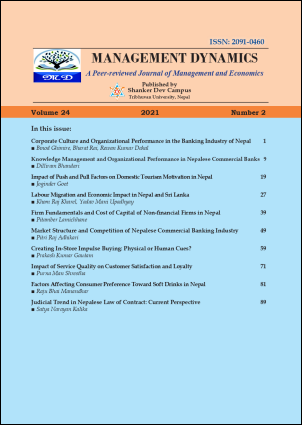Market Structure and Competition of Nepalese Commercial Banking Industry
DOI:
https://doi.org/10.3126/md.v24i2.50039Keywords:
banking competition, interest-based product market, OLS regression, Panzar-Rosse model, unit root testAbstract
This paper attempts to examine the market structure and competition of the commercial banking industry in Nepal for the period 2001 to 2019. This study has used the OLS regression technique to test market competition by employing domestic data sets sourced from Nepal Rastra Bank and the Security Board of Nepal. An augmented Dickey-Fuller test has been conducted to examine the unit-root problem. Different econometric diagnostic tests are conducted to avoid the parsimony of results. To assess the determinants of interest-based revenue of the banks, staffing expenses, interest expenses, other expenses, loan amount, and total assets are regressed on interest-based income to total assets (dependent variable). It is observed that all explanatory variables are statistically significant except for the loan amount. Further, it is found that Nepalese commercial banks have monopolistic competition, and this structure states that the banks are more profitable but not efficient. Therefore, concerned parties, and policymakers, should focus on market competition because that results in market efficiency and social welfare.
Downloads
Downloads
Published
How to Cite
Issue
Section
License
Copyright © Research Management Cell, Shanker Dev Campus




